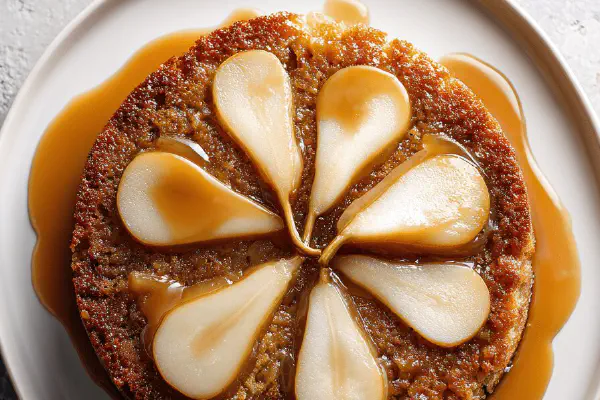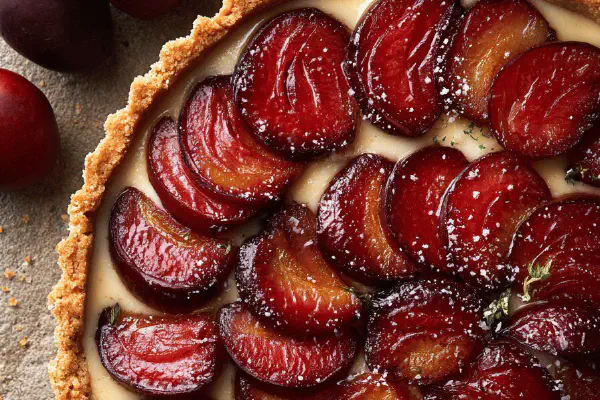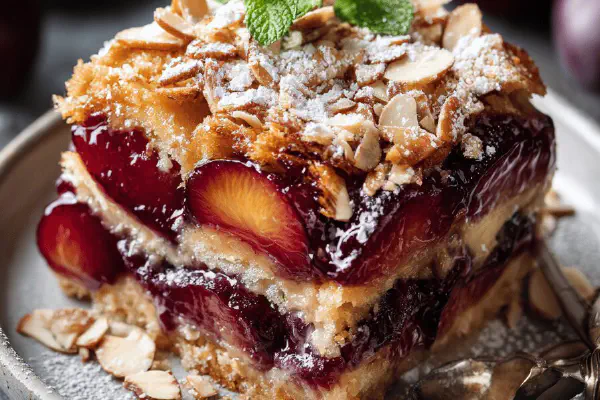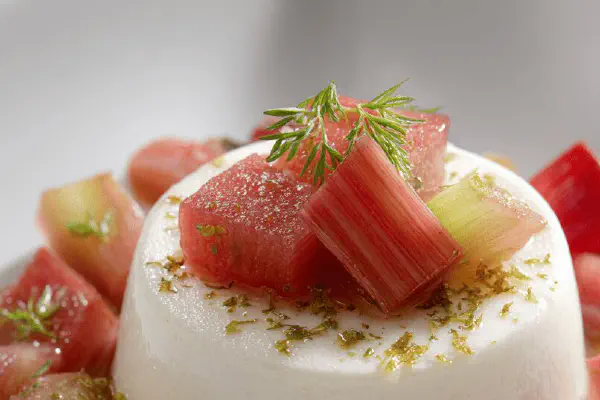Pear Upside-down Spice Cake

By Emma
Certified Culinary Professional
Ingredients
- 5 firm pears medium size peeled cored halved
- 150 grams coconut sugar packed
- 80 milliliters extra virgin olive oil
- 180 grams all purpose flour sifted
- 3 large eggs room temperature
- 120 milliliters buttermilk or plain yogurt as substitute
- 1 teaspoon ground cinnamon heaping
- ½ teaspoon ground ginger
- 1 teaspoon baking powder
- ½ teaspoon baking soda
- Pinch salt
- ½ teaspoon star anise ground mix into caramel
- Juice half lemon
About the ingredients
Method
- Preheat oven to 175°C fan forced or 350°F conventional. Butter individual ramekins well to avoid sticking. In my experience, oil slick can cause caramel slip. Protect edges.
- Make the caramel. In heavy pan put coconut sugar, star anise, lemon juice and 60ml water. Medium heat; watch closely. Bubbles darken from pale amber to rich tawny in 5-7 minutes. Smell it. Watch for slightest burn smell; pull off heat quick before bitter starts. Caramel thickens and darkens fast. Pour evenly into ramekins bottom.
- Arrange pear halves skin side down on caramel. Fit them snug, crowd the pan. Pears will shrink; no gaps. Don’t crowd too much or steam forms, spoils caramel crunch.
- Mix dry: flour, cinnamon, ginger, salt, baking soda, powder. Whisk lightly, aerate. Separate bowl: eggs, olive oil, buttermilk. Whisk vigorous to emulsify. Add sugar last bit by bit retaining some grainy crunch hints. Sugar texture matters for crumb.
- Fold dry ingredients into wet gently but thoroughly. Batter thick, lumpy but smooth. Overmix bleeds gluten—cake tough. Expect lumpy batter; it bakes out.
- Pour batter slowly over pears. Tap pan on bench to remove air bubbles; batter seeps into pear gaps. Smooth surface with palette knife.
- Bake 60-70 minutes. Edges brown, cake puffy, center springs back softly when poked. Test with skewer; moist crumbs cling but no raw batter. Oven temps vary; watch color more than timing.
- Remove carefully; wait 15 minutes loosely covered with tea towel. Too hot and caramel sticks to ramekins like glued.
- Invert each onto plate while still warm, caramel-pears facing up. A little shake nudges release. If stuck, run knife gently around edges. For safer release, run quick hot knife slice between cake and pan before flipping.
- Serve warm or room temperature. Texture is moist, tender, punctuated by chewy caramel bits. Pears soft but hold shape, lightly sticky and sweet with spice background. Can add dollop creme fraiche or whipped coconut cream to tame sweetness.
- Leftovers keep wrapped in fridge up to 2 days. Reheat gently in low oven or microwave 20 seconds to revive softness.
- Variations: swap star anise for cardamom whole pods; add chopped walnuts or pecans for crunch embedded in batter. Swap pears for apples or quince but adjust caramel time—harder fruit requires longer softening.
- Watch caramel like a hawk. Once burnt, no fix; start again. Using coconut sugar darkens both caramel and cake crumb; if you prefer golden tone, half brown sugar half coconut fine.
- Olive oil choice impacts aroma subtly—go fruity cold pressed. If butter preferred, melt and cool but risk heavier crumb.
Cooking tips
Chef's notes
- 💡 Caramel timing is fragile. Listen for fast bubbling, darkening from pale to rich tawny. Smell nutty amber not burnt. Pull off heat exactly then. Burnt caramel ruins top layer; no fix. Use medium heat, no rush. Stir gently first minute only then let it bubble.
- 💡 Oiling ramekins, butter can slick out caramel; I avoid slippage with butter. Pears need firm but ripe. Too soft means melting into caramel puddle; firmness keeps shape. Arrange snug but not packed. Too crowded traps steam—kills crispy caramel layer.
- 💡 Sugar texture matters. Coconut sugar brings earthy notes but remains grainy. Add last in wet mix bit by bit. Retaining slight crunch helps crumb texture. Avoid overmix; lumpy batter okay. Overbeating develops gluten, makes cake dense and tough.
- 💡 Fold dry into wet gently but thoroughly. Batter thick, lumpy but smooth. Overmixing bleeds gluten and toughens crumb. Expect lumps; bake out fine. Tap pan to remove air bubbles; batter seeps in between pear halves. Helps even bake, avoids gaps under fruit.
- 💡 Inverting cakes when warm critical. Caramel quickly cools and sticks tight. Gentle shake nudges release. If stuck run hot knife slice quickly between cake and pan edges. Microwave trick loosens but stresses structure—best avoided for fragile ramekin cakes.
Common questions
Why use star anise in caramel?
Adds subtle licorice aroma layered under caramel scent. Not sharp but rounds flavor. If no star anise, vanilla bean scraped works. Extract better in batter not caramel or bitterness burns.
Can coconut sugar be swapped?
Dark brown sugar good substitute but caramel less deep. Adjust baking powder down by quarter teaspoon to balance acidity when swapping. Regular brown sugar softens crumb more than coconut sugar.
Cake sticks to ramekins often?
Butter alone slicks caramel out easy; oil ramekins well. Cool caramel partly before adding pears. Wait 15 minutes whole cake rest after baking before flipping. Hot caramel sticks worse; patience key. Hot knife run around edges before flipping helps release.
How to store leftovers?
Wrap tight in fridge up to 2 days. Reheat gentle, low oven or microwave short bursts 20 seconds. Avoid drying out; cake goes firmer with longer chill. Freezing risky for caramel texture, breaks sticky top.



